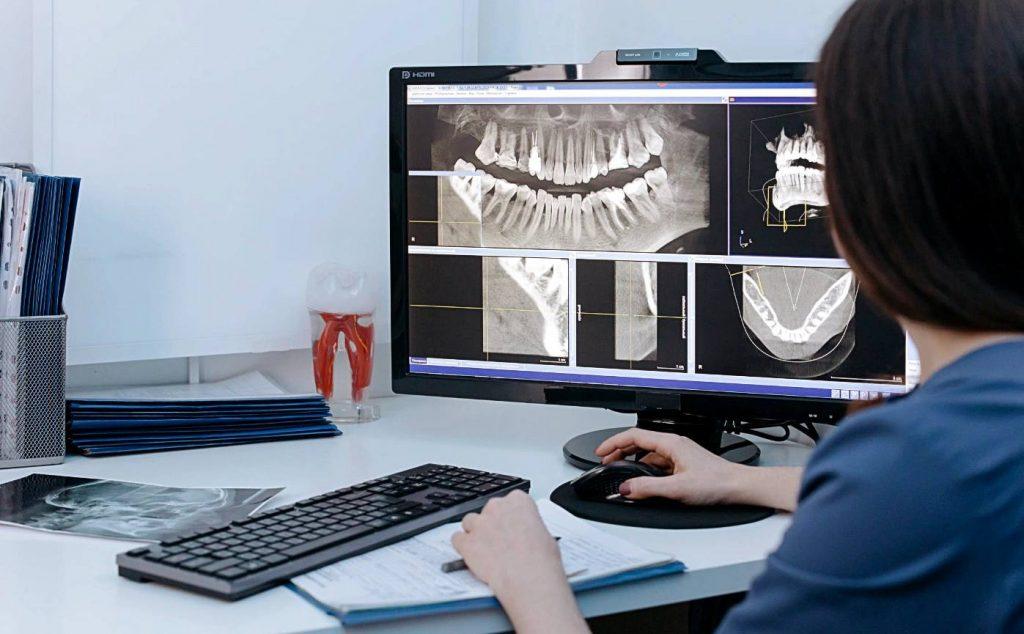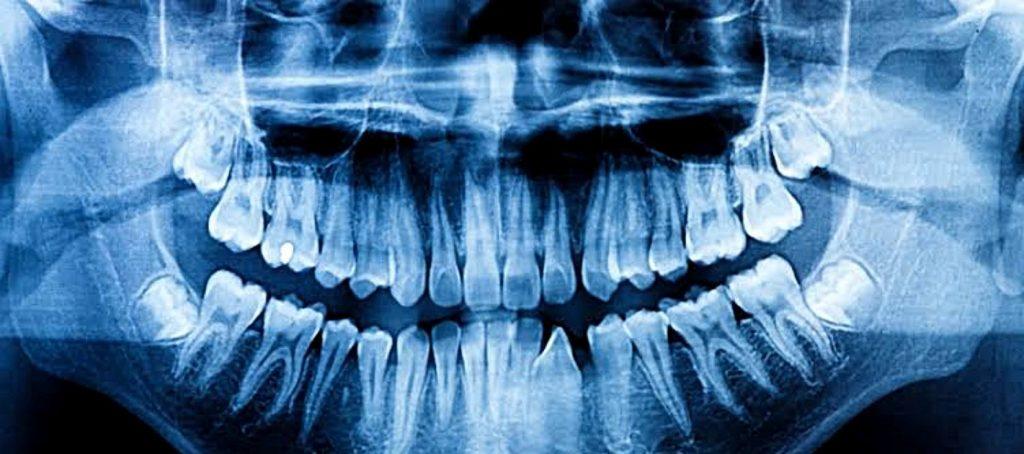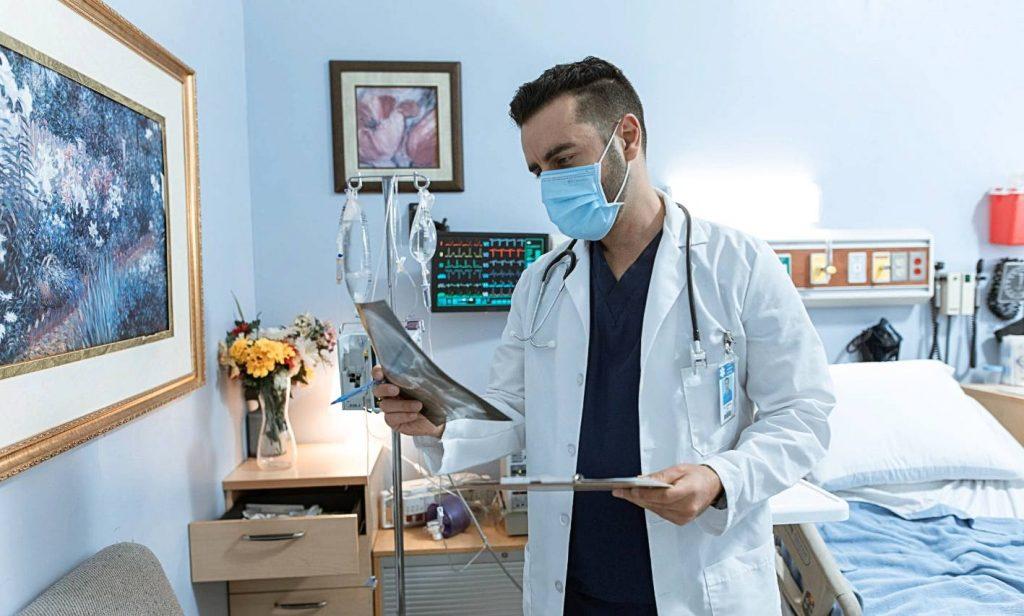Introduction:

All vital information about Baby Teeth Xray is covered in this article, and this post will guide you step by step for free.
Many parents are concerned about their children’s exposure to X-rays. Dental X-rays are a valuable tool that dentists use to discover, locate, and diagnose any issues with your child’s teeth.
Children, in general, require radiographs more frequently than adults because the enamel of baby teeth is much thinner than that of permanent teeth, and their mouths grow and change rapidly. And before any radiographs are taken, parents are always informed.
Below is some helpful information about Baby Teeth Xray, which will guide you. This article is reviewed by our medical authors and if you have any questions ask me in the comment section below.
Baby Teeth Xray

This x-ray is done every few years during childhood growth to assess the growing teeth, including impacted, missing, or additional teeth, as well as detect any abnormalities such tumors or cysts.
In dentistry, x-rays are considered a crucial part of a full dental examination. It is impossible to remedy a problem without first identifying it. Early detection and treatment of dental issues can reduce discomfort, improve future oral health, and save time and money.
A dental x-ray also aids in the detection of internal issues such as tooth decay (especially early stage decay between the teeth). Because the sooner a dental issue is identified and treated, the better for your child.
According to one source, X-rays should be taken every 6 to 12 months starting at the age of two. The quantity of X-rays taken depends on the child’s age, medical/dental history, and the findings of the dental checkup.
When To Have Baby Teeth Xray?
Knowing when your child should have their first dental appointment can be difficult. The American Academy of Pediatric Dentistry recommends a visit before they turn one year old or when their first primary tooth appears (baby teeth).
After their first visit, we recommend that your child should see their dentist at least every six months, just like adults. Also, after their initial appointment, you can talk about how often you want your child to see their dentist, with more frequent visits in the coming years.
More Details;
After your baby is born, you may begin an oral care practice for them. Once a day, wipe their gums with a soft cloth and fluoride toothpaste.
Replace the cloth with a soft-bristled toothbrush once their primary (baby) teeth appear. This is a pleasant way to bond with your infant while also preventing dental issues.
Additional Information On Your Baby Teeth Xray

Since the enamel of infantile teeth is much weaker than that of permanent teeth, and their mouths grow and change fast, children require radiography more frequently than adults.
By modeling appropriate oral hygiene, you may help your kid create positive connections with dental care. After each visit to the dentist, consider rewarding your child with a small toy for good behavior.
The development and health of your baby’s primary (baby teeth) teeth are Important. They aid not just with chewing and eating, but also with speech. The requirement for an X-ray of your child’s primary (baby) teeth is determined by their particular health history and needs.
X-rays are a safe and effective way to learn about your child’s dental growth and health requirements. Dental experts are taught to adopt child-friendly techniques. And to minimize complications, it’s important to address oral issues as soon as possible.
What Is Digital Radiography?
Digital radiography is a type of radiography that employs x-ray–sensitive plates to record data directly during the patient examination and upload it to a computer system right away.
Time savings are gained by skipping chemical processing, as well as the opportunity to digitally transmit and improve photographs. Digital radiography employs a digital image capturing device instead of X-ray film.
This technique allows the picture to be stored digitally and compared to earlier photographs, in addition to the benefit of reduced radiation exposure.
Another Reading Suggestion
Are X-rays Of Baby Teeth Safe For A Child ’s Health?

Every parent is afraid about radiation, but there is no need to be concerned about x-rays anymore. To create X-rays, modern technologies employ the least amount of radiation possible, and some equipment may reduce exposure by up to 90%.
Aside from that, these devices create the highest quality photos that are needed. You may also ask your pediatric dentist about the X-ray machines in the dental office’s.
How To Comfort A Child While Doing An X-ray?
To avoid any concern, a kid-friendly environment is required. To keep a child’s interest, a variety of toys and cartoons can be used.
Nothing should be a surprise for the baby. Otherwise, kids could become afraid. All of these techniques can help kids with dentists overcome anxiety and panic.
Will A Dental X-ray Hurt My Baby?
The quantity of radiation used in a dental X-ray is extremely low, and the American Dental Association and American Pregnancy Association believe it is not enough to cause effects on a pregnant woman or her baby.
If you’ve ever had dental X-rays, you’ll remember the dentist or hygienist wrapping you in a heavy apron before turning on the X-ray machine.
The apron is meant to reduce radiation exposure during the X-ray procedure. It is long enough to cover the abdomen, ensuring that the infant is safe during the procedure. When your dentist or hygienist puts the apron on, it will feel heavy, but it is okay to wear at any stage of pregnancy.
How Do They Take X-rays On Babies?

The x-ray technologist will position the child before turning on the machine by walking behind a window or into the next room.
The child must remain completely motionless to avoid blurring the image. Older children will be instructed to hold their breath and remain motionless for a few seconds during the x-ray.
From positioning to getting and validating the images, the entire x-ray test takes about 15 minutes. In most cases, radiation is only exposed for a fraction of a second. The technologist may advise the kid to lie on their side or stand up for more photos.
How Do X-rays For Teeth Work?
Since the teeth and bones absorb more of the rays than the gums and soft tissues when it passes through the mouth, the teeth look lighter on the final X-ray image (called a radiograph). Because they absorb less X-ray, areas of tooth decay and infection seem darker.
What Do Dental X-Rays Show?
On an X-ray, the appearance of fillings and crowns is determined by the materials used. X-rays can be used by dentists to detect infections, abscesses, and even tiny cysts and malignancies.
They can also aid in the detection of developmental abnormalities such as impacted wisdom teeth. Your dental expert can utilize them to assist identify any areas that require care or correction, no matter what sort of dental restoration or implant you have.
What Are The Risks Of Dental X-rays?

According to new research, repeated exposure to dental X-rays may raise the risk of thyroid cancer and tumors in the brain and spinal cord tissue.
According to studies, the number of persons diagnosed with thyroid cancer and meningiomas’ (benign tumors that develop slowly) in the UK has increased considerably in the last 30 years.
Each year, around 3,500 new instances of thyroid cancer are discovered in England and Wales, with 1,850 of these cases being incurable.
Why Would My Baby Need A Dental X-Ray?
The following are some of the reasons why you might consider getting a baby teeth xray:
- X-rays can discover any abnormalities with your child’s jaw spacing.
- X-rays enable us to see issues with a tooth’s roots or other bone-related dental issues.
- In the event that your kid requires a tooth extraction or other difficult treatments, X-rays can be utilized as a “map.”
Why Must My Baby Teeth Need Special Care?
Although baby teeth are not permanent, they have an impact on permanent teeth. Infection of newborn teeth can cause long-term damage to the jaws.
Furthermore, if a newborn loses teeth early, the other teeth may press in that area, causing crowding. As a result, infant teeth require special treatment.
It’s vital to keep baby teeth healthy and in place for proper eruption and placing of permanent teeth.
Furthermore, keeping young children’s teeth and gums healthy helps to prevent infections that can lead to far more serious health issues.
Another Reading Suggestion
How Many Dental X-rays Are Too Many For A Child?

Children’s X-rays should be taken every six months, with two or four bitewing radiographs depending on the number of teeth your child has.
X-rays are an important tool for assessing and maintaining optimum oral health in children, according to the American Academy of Pediatric Dentistry (AAPD).
They aid in the detection and prevention of potential problems that a visual examination alone cannot detect. Naturally, this will be determined by your child’s particular circumstances.
Will my child require x-rays at every visit?
Definitely not. Only when It is necessary, X-rays are utilized to assess and monitor a child’s oral health.
Request that copies of your child’s x-ray films be given to your new pediatric dentist to eliminate the need for additional x-rays and reduce radiation exposure. The number of times a baby is X-rayed is determined by their individual circumstances and might vary from child to child.
How Often Should A Baby Have His Or Her Teeth X-rayed?

After reviewing a child’s medical and dental history and doing a clinical examination, dental x-rays are recommended.
Children with a low risk of tooth decay usually require fewer x-ray tests. For children with a high risk of tooth decay, the American Academy of Pediatric Dentistry recommends X-ray scans every six months.
How Much Do Baby Teeth X Ray Cost?
| X-ray | Average Cost |
|---|---|
| Baby Teeth X Ray | $25 - $760 |
According to Authority Dental, the average cost of a bitewing X-ray is usually $35.
The average cost of a periapical X-ray is around the same. Meanwhile, panoramic X-rays capture your entire mouth and jaw in one image. On average, a panoramic dental X-ray will cost you about $130.
Types Of Dental X Rays

-
Bitewing X-rays
Bitewing X-rays are used to identify tooth decay and changes in bone thickness caused by gum disease. They can also aid in the fitting of crowns (caps that fully surround a tooth) and other treatments. Each bitewing displays a tooth from its crown to the supportive bone’s level.
-
Periapical X-rays
An x-ray that captures the whole tooth is called a periapical x-ray. Everything from the crown (chewing surface) to the root is visible (below the gum line).
A little part of your upper or lower teeth is seen on each periapical x-ray. X-rays of the root and adjacent bone structures are frequently performed to detect any unexpected changes.
How it works
To get an x-ray image of the interior of your ear, nose, and throat, bite onto a film that has been put near your mouth.
-
Occlusal X-rays
Occlusal X-rays are used to detect additional teeth, teeth that have not yet burst through the gums, jaw fractures, a cleft palate, cysts, abscesses, or growths on the roof or floor of the mouth. And a foreign item can also be found using occlusal X-rays.
-
Panoramic X-rays
Panoramic radiography is a two-dimensional (2-D) dental x-ray that captures a picture of the whole mouth in one shot. And the most popular and oldest form of medical imaging is X-rays. It creates pictures of the inside of the body by exposing the person to a low dose of ionizing radiation.
It’s a common process used by dentists and oral surgeons to plan treatment for dentures, braces, extractions, and implants. This exam requires minimal to no further study. When you think you could be pregnant, just tell your doctor.
-
Cephalometric X-rays
In a side view of your head, cephalometric x-rays (also known as ceph x-rays or radiographs) reveal your teeth, jaw, and surrounding tissues. This technology is regarded as safe and is frequently used or required to aid professionals in evaluating and assisting patients.
It is a useful document to have before therapy and may be used to track progress during treatment. It is used to determine the etiology of malocclusion, such as whether the malocclusion is caused by skeletal, dental, or both factors.
-
Cone Beam Computerized Tomography X-rays
Cone-beam computed tomography systems (CBCT) are a type of CT scanner that uses a cone-shaped X-ray beam to acquire data. These data are utilized to create a three-dimensional (3D) picture of the dental (teeth), oral and maxillofacial area (mouth, jaw, and neck), and ears, nose, and throat parts of the patient’s anatomy (“ENT”).
Since the early 2000s, dental CBCT systems have been commercialized in the United States. Radiologists and dental professionals are increasingly using them for a variety of clinical applications, including dental implant design, imaging of aberrant teeth, and detection of dental caries (cavities), and endodontic (root canal) diagnostics.
Another Reading Suggestion
Final Thoughts
Preparing for your kid’s first dental appointments might be stressful, but you can feel relieved knowing that professionals are experienced at assisting you and your child in having great dental experiences.
Even for your toddler or child, X-rays contain a minimal level of radiation that is proven safe. Also dental professionals are educated to employ child-safe techniques.
Keep in mind that a good dentist will know how to put you and your child at ease during any treatment, procedure, or X-rays. So feel free to consult your dentist.
If this article was helpful to you, tell us in the comment section below and share this article with your friends and family. And If there’s any questions, ask us below. Thanks.


